It was this combination of color and design. Everybody always said that these women could only copy and that they copied and copied and copied. But within each kilim, there were all of these variations and they managed so well to conform to my concept of what was interesting and what was beautiful. I know that they hadn’t woven them for me, but they fell within what I was interested in… [1]
The extensive collection of Josephine Powell, photographer and collector, includes photographs, field notes and audio fragments based on Anatolian visual and ethnographic memory after the 1960s. A huge part of the collection consists of over 30,000 images taken during Anatolian trips between 1974-1994 focusing on concentrating on village and nomadic lifestyles and culture which are accessible through Suna Kıraç Library Digital Collections. Six thousands of these photographs are of textiles; the rest are of the daily life of villagers and nomads, primarily people who worked with textiles.
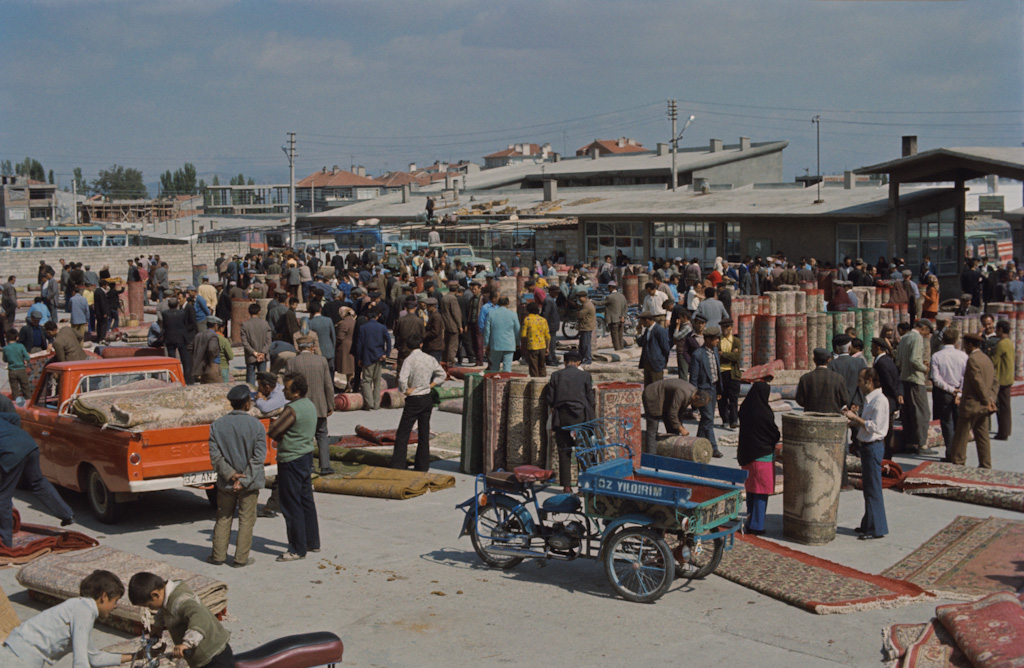
Kilim market, 1975, Isparta
https://libdigitalcollections.ku.edu.tr/digital/collection/JPC/id/1472/rec/1

Kilim market, 1975, Isparta
https://libdigitalcollections.ku.edu.tr/digital/collection/JPC/id/1480/rec/1

Kilim market, 1975, Isparta
https://libdigitalcollections.ku.edu.tr/digital/collection/JPC/id/1470/rec/1
Bundles of variously colored wool hanging outside a dyers shop, 1977, Konya
https://libdigitalcollections.ku.edu.tr/digital/collection/JPC/id/5316/rec/1

Bazaar in Eminönü, 1978, Istanbul
https://libdigitalcollections.ku.edu.tr/digital/collection/JPC/id/5427/rec/1

Kilim bazaar, 1978, Aksaray
https://libdigitalcollections.ku.edu.tr/digital/collection/JPC/id/8429/rec/1

Kilim shop, 1979, Kula, Manisa
https://libdigitalcollections.ku.edu.tr/digital/collection/JPC/id/10900/rec/1

Rug bazaar, 1981, Aksaray
https://libdigitalcollections.ku.edu.tr/digital/collection/JPC/id/15106/rec/1
Though it is a daily-use object, carpets can be considered as a work of art that reflect Anatolian culture and the most profound characteristic of Turkish art of carpet weaving is its continuity. It is important to express that the tradition evolves while developing a new source or receiving any motifs or elements. [2] These symbols of Turkish identity can easily be understood even in old carpets. Even a smallest piece of an old carpet carries the richest meanings for an experienced eye, able to describe those symbols in their correct form. This small piece of work reveals the details related to the cultural source of the carpet and its the transformations within centuries. This significant characteristic of carpets is as they house a foreign language. Understanding and usage of this language in the correct form, along with teaching and protecting, points out the continuity of the tradition. [3] Practice of weaving a carpet needs a complex organization of the sense on the cogitation level. It indicates a different type of skill to align complicated patterns line by line in a mathematical system and carry this focus without any mistake to the last knot. [4]

Rug bazaar, 1987, Ayvacık, Çanakkale
https://libdigitalcollections.ku.edu.tr/digital/collection/JPC/id/27335/rec/1
Rug bazaar, 1988, Ayvacık, Çanakkale
https://libdigitalcollections.ku.edu.tr/digital/collection/JPC/id/27728

Rug bazaar, 1988, Ayvacık, Çanakkale
https://libdigitalcollections.ku.edu.tr/digital/collection/JPC/id/27733/rec/1

Rug bazaar, 1988, Ayvacık, Çanakkale
https://libdigitalcollections.ku.edu.tr/digital/collection/JPC/id/27672

Cicims hanging on a wall at carpet bazaar, 1978, Uşak
https://libdigitalcollections.ku.edu.tr/digital/collection/JPC/id/7938
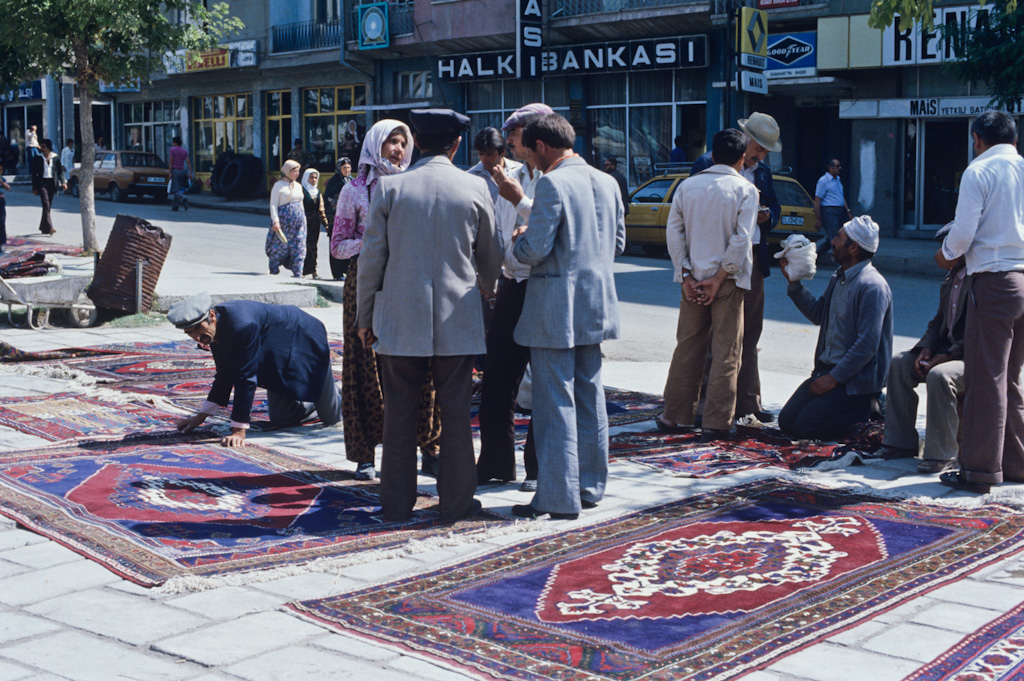
Rug bazaar, 1981, Aksaray
https://libdigitalcollections.ku.edu.tr/digital/collection/JPC/id/15088

Rug bazaar, 1981, Aksaray
https://libdigitalcollections.ku.edu.tr/digital/collection/JPC/id/15107/rec/1
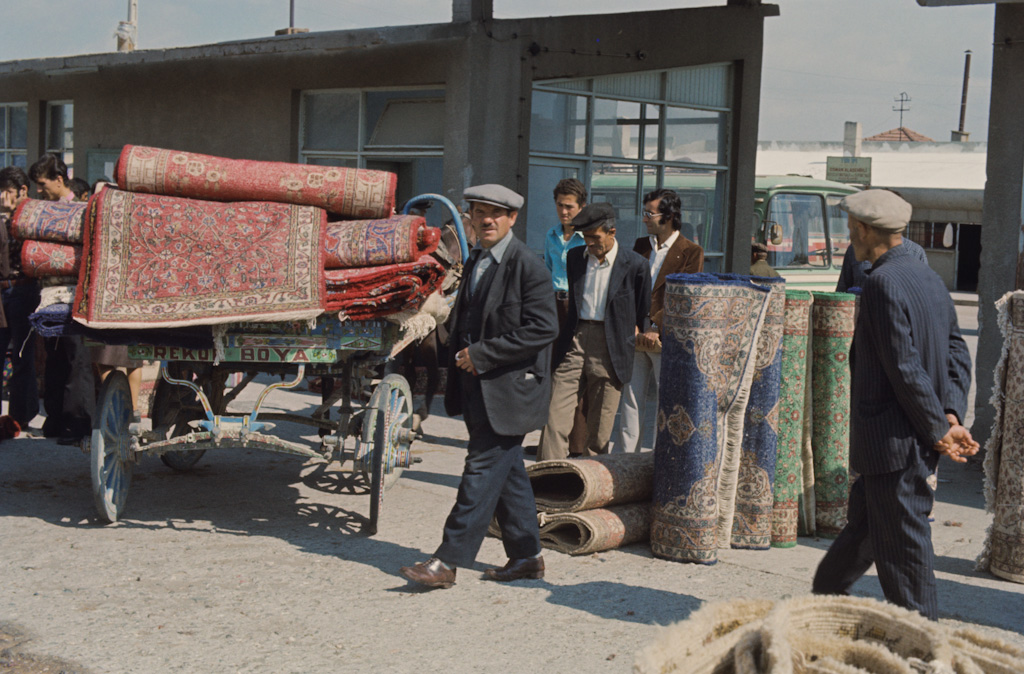
Carpet market, 1975, Isparta
https://libdigitalcollections.ku.edu.tr/digital/collection/JPC/id/1469
These works of Powell compose a reliable source on documenting kilim and pattern motives on local-level as well as demonstrating histories of these patterns, skills of the weavers and their group identities. [5]
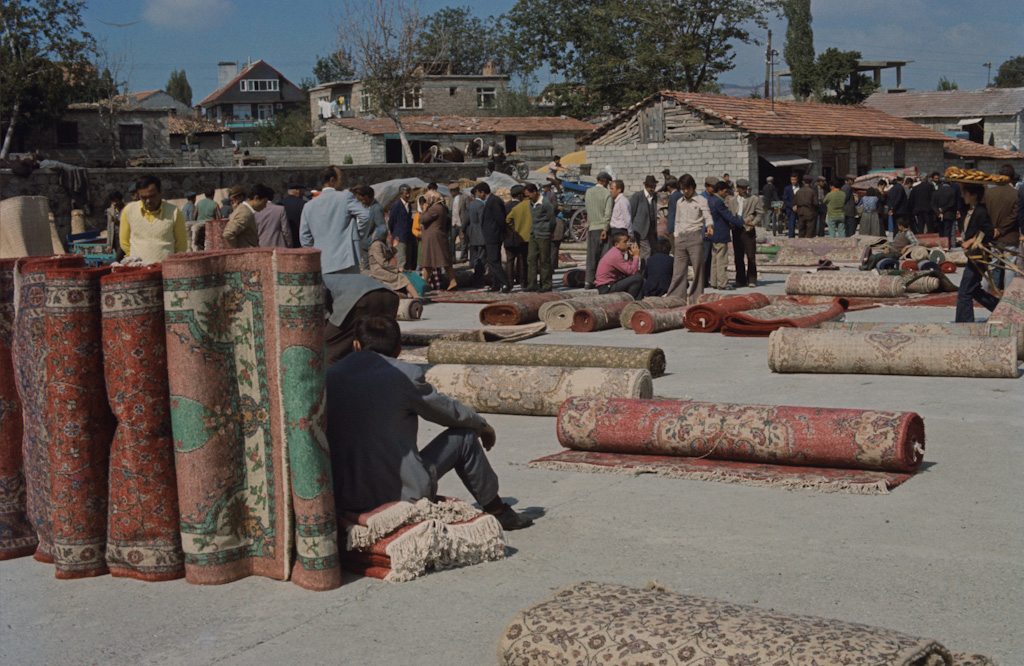
Carpet market, 1975, Isparta
https://libdigitalcollections.ku.edu.tr/digital/collection/JPC/id/1476/rec/1

Carpet market, 1975, Isparta
https://libdigitalcollections.ku.edu.tr/digital/collection/JPC/id/1473

Kilim shop, 1978, Uşak
https://libdigitalcollections.ku.edu.tr/digital/collection/JPC/id/7921
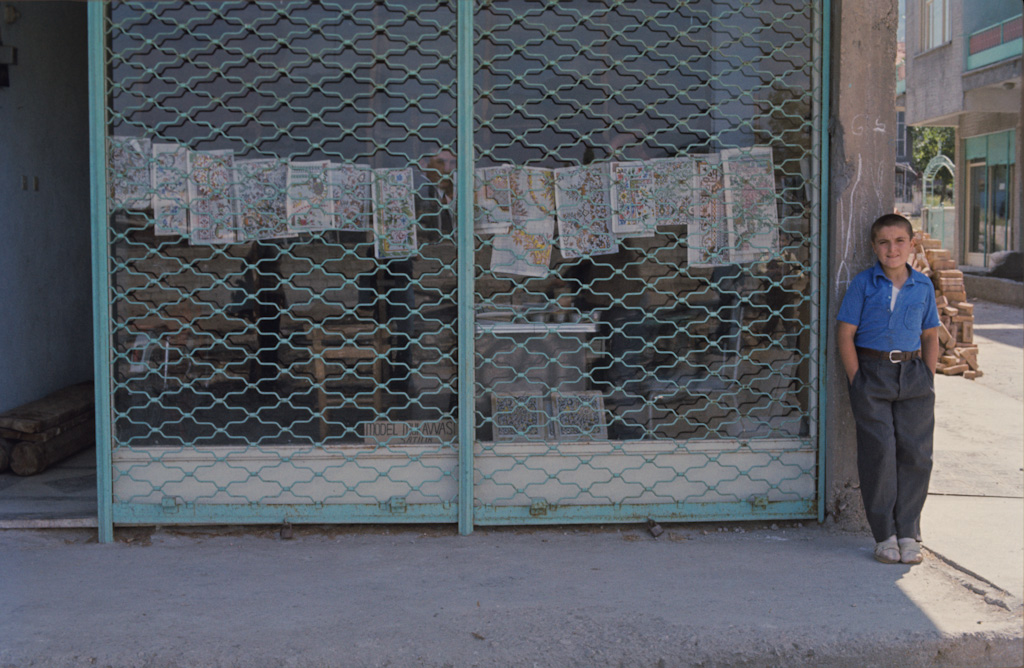
Kilim shop, 1975, Isparta
https://libdigitalcollections.ku.edu.tr/digital/collection/JPC/id/1488/rec/1

Kilim shop, 1978, Uşak
https://libdigitalcollections.ku.edu.tr/digital/collection/JPC/id/7925
Kilim shop, 1978, Kula, Manisa
https://libdigitalcollections.ku.edu.tr/digital/collection/JPC/id/7702/rec/1

Kilim shop, 1978, Kula, Manisa
https://libdigitalcollections.ku.edu.tr/digital/collection/JPC/id/7761

Kilim shop, 1978, Kula, Manisa
https://libdigitalcollections.ku.edu.tr/digital/collection/JPC/id/7720/rec/1
A street of kilim shops near the Mevlana Museum, 1978, Karatay, Konya
https://libdigitalcollections.ku.edu.tr/digital/collection/JPC/id/5954
One of the themes of these images in the collection can be evaluated as kilim shops and kilim bazaars where the production and aesthetic in the villages transferred district and city centers, where the kilims are exhibited and changed hands. These locations are also the encounter points where the actual weavers meet purchasers. This digital exhibition presents selected images from the Josephine Powell Slides Collection of kilim shops and bazaars located in Anatolian cities such as Isparta, Muğla, Kayseri, Aksaray, Çanakkale.
Sources
[1] What Josephine Saw: Twentieth Century Photographic Visions of Rural Anatolia, ed. Kimberley Hart, Andrew Finkel’s interview with Josephine Powell, 2006, Koç University Press, 2012
[2] Historical Development of Turkish Carpet-Weaving, Aslanapa, Oktay, Arış, Ankara 1997
[3] Conservation of Identity: On Turkish Art of Carpet-Weaving, Küçükerman, Önder, Arış, Ankara 1997
[4] Conservation of Identity: On Turkish Art of Carpet-Weaving, Küçükerman, Önder, Arış, Ankara 1997
[5] Josephine’s Fragments, ed. A. Beril Kırcı, Mehtap Türkyılmaz, On Josephine Powell, Koç University, 2016




